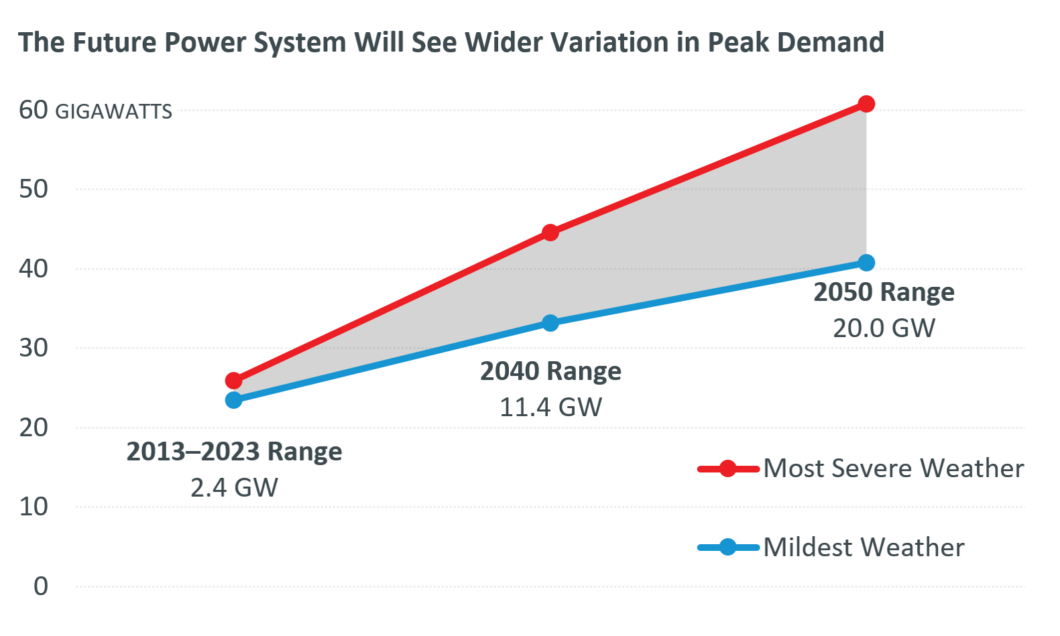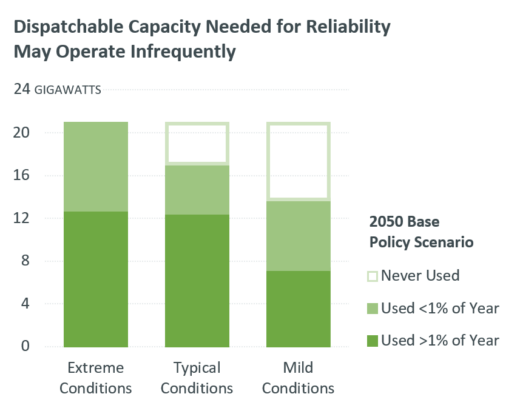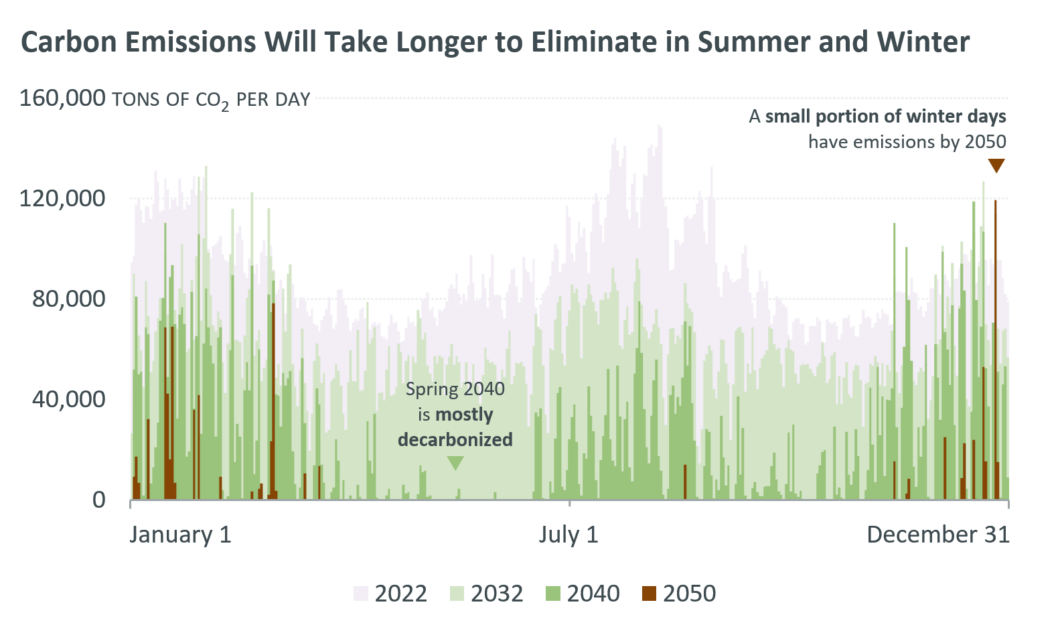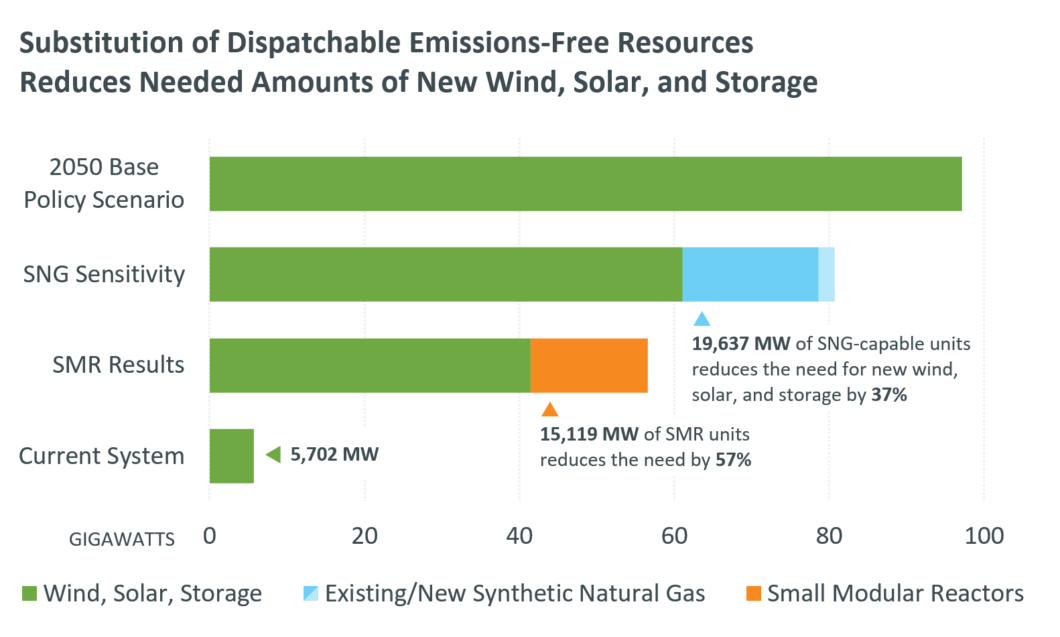ISO-NE’s EPCET study highlights possibilities and challenges of the clean energy transition
By 2050, the region’s peak demand for electricity in a severe winter could be 50% higher than peak demand in a mild winter, according to the recently published draft report on ISO New England’s Economic Planning for the Clean Energy Transition (EPCET) study. A vast renewable build-out may be required to support such wide swings in demand, study results show, but zero-carbon fuels could help maintain the region’s high standard of reliable electricity in this more variable future.
With more than two years of study work to support its findings, EPCET explores the operational, engineering, and economic challenges the region must address in order to support the New England states’ commitment to significantly reduce carbon emissions over the next several decades. Most of the six states aim to cut emissions by at least 80% from 1990 levels by the year 2050 through a shift to renewable energy and electrification of heating and transportation.
Key EPCET findings
Most paths to a low-carbon grid involve high variability in demand and supply.
EPCET’s results show that peak demand for electricity will shift from summer to winter by the mid-2030s, and peak demand could vary by up to 20 GW between mild and severe winters by 2050. As wind and solar resources increase, overall electricity supply will also become far more variable, since it will depend much more on the weather than it does in today’s grid.

Increased variability will require vastly different supply levels from year to year.

To maintain reliability, the New England power grid will need enough resources to serve peak demand for the most severe winter conditions the region might see. But, most winters are likely to be milder, with significantly lower peaks.
Some resources needed to maintain reliability during the harshest conditions may only run for a few days once every few years. Reducing peak demand below the high end of EPCET’s projections would lessen the supply levels needed from year to year and potentially decrease the need for such resources.
Emissions reductions will be seasonal. Some months will decarbonize years before others.
Because wind and solar production is highest in spring and fall, and demand for electric heating or cooling is lower, these shoulder seasons will see the first future months without carbon emissions. Modeling shows spring will be mostly decarbonized by 2040, but a small portion of winter days will still produce significant emissions in 2050.

Renewable-only build-outs may be vast.
If the future resource build-out is almost entirely wind, solar, and batteries, the region will need to add roughly 18 times its current combined capacity of these resources to achieve state emissions goals and maintain reliability.
Current revenue structures may not adequately compensate resources for their value to the future grid.
Driven by the seasonality of decarbonization, as 2050 approaches, newly built wind and solar resources will produce surplus, unused energy for increasing periods of time, especially in spring and fall. As a result, their cost per megawatt-hour (MWh) will rise, and the current compensation structures for these resources may function less economically. On the other hand, dispatchable resources that help meet peak demand on a few key winter days may not be compensated adequately under current market rules, even though their ability to maintain reliability during those cold snaps will be very valuable.
Firm, dispatchable, zero-carbon generation could help address challenges.
Long-duration storage may help meet high demand during shorter cold snaps, but not over more extended periods of severe winter conditions. Firm, dispatchable, zero-carbon generation would help ensure reliability during these periods. EPCET explores the use of synthetic natural gas (SNG) and small modular nuclear reactors (SMRs) as possible zero-carbon candidates in the future grid, and finds that such resources may reduce overall system costs by reducing the need for new renewable capacity.

Next steps
EPCET is the culmination of ISO New England’s lessons learned in the economic study process over the last several years, and is supported by 33 published scenarios and more than 2,800 simulations. As part of its responsibility to plan for a reliable future grid, ISO New England continuously assesses possible market rule enhancements designed to support reliability and economic efficiency through the states’ planned clean energy transition. EPCET and future economic studies, along with other ISO studies such as the 2050 Transmission Study, the Future Grid Reliability Study, and the Probabilistic Energy Adequacy Tool, will help inform this regional market development, and ensure that New England transitions to a cleaner grid in the most economical, reliable way possible.
- Categories
- Publications
- Tags
- clean energy, new england states, renewable resources
